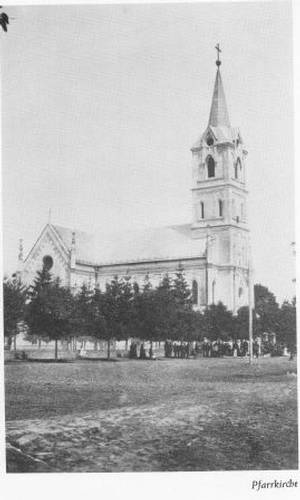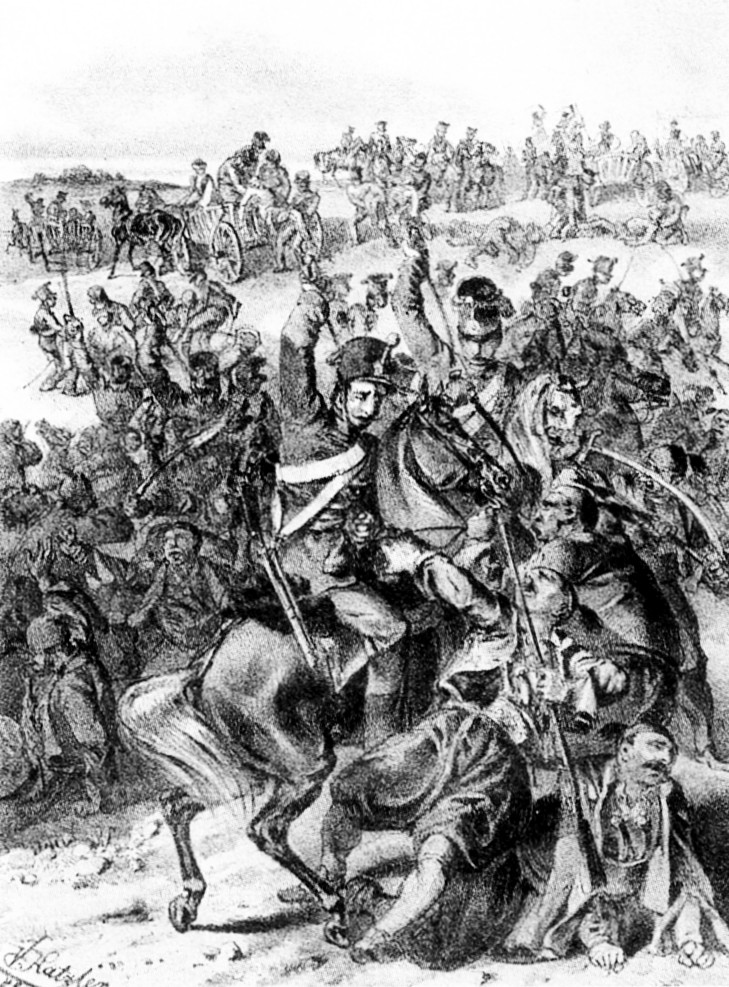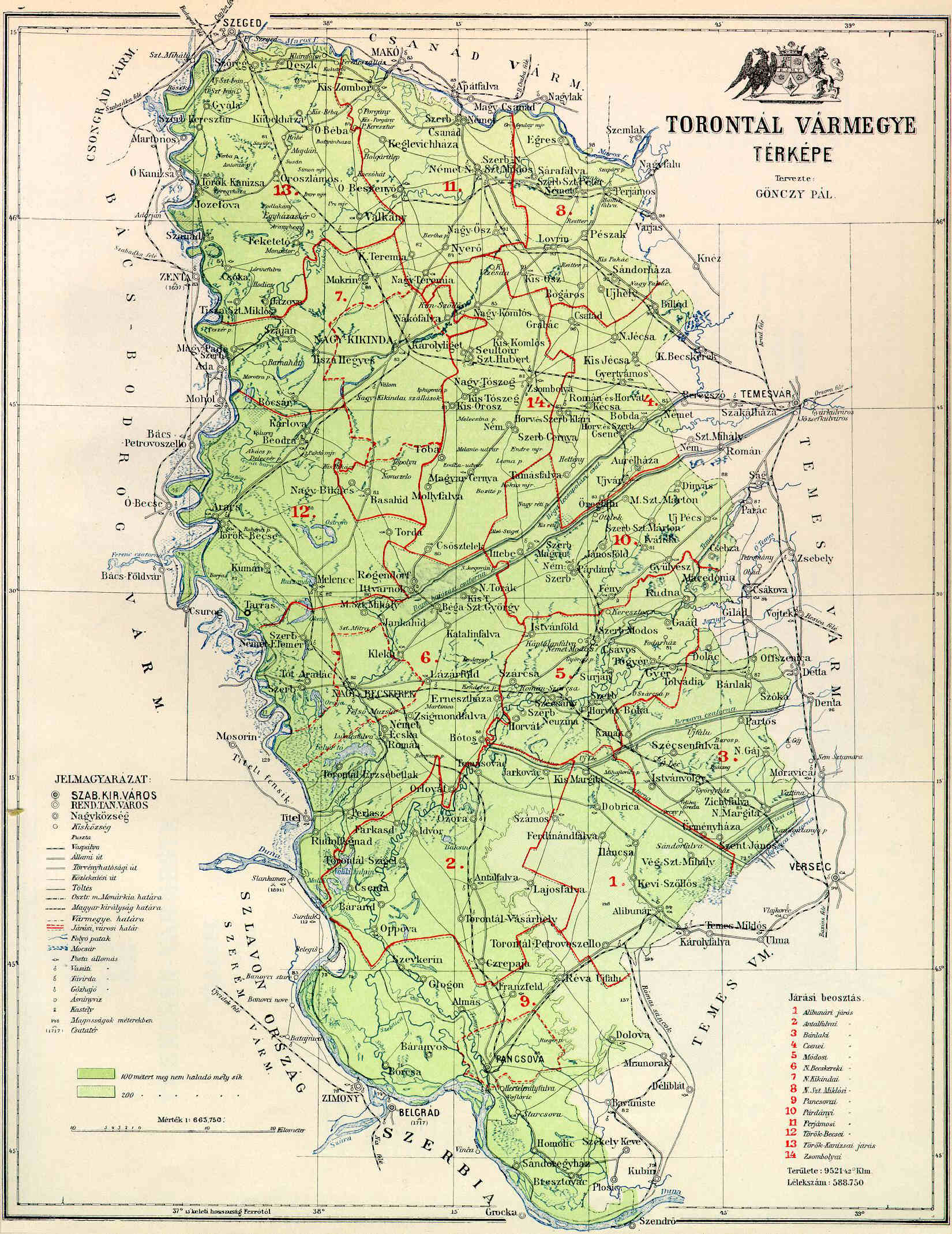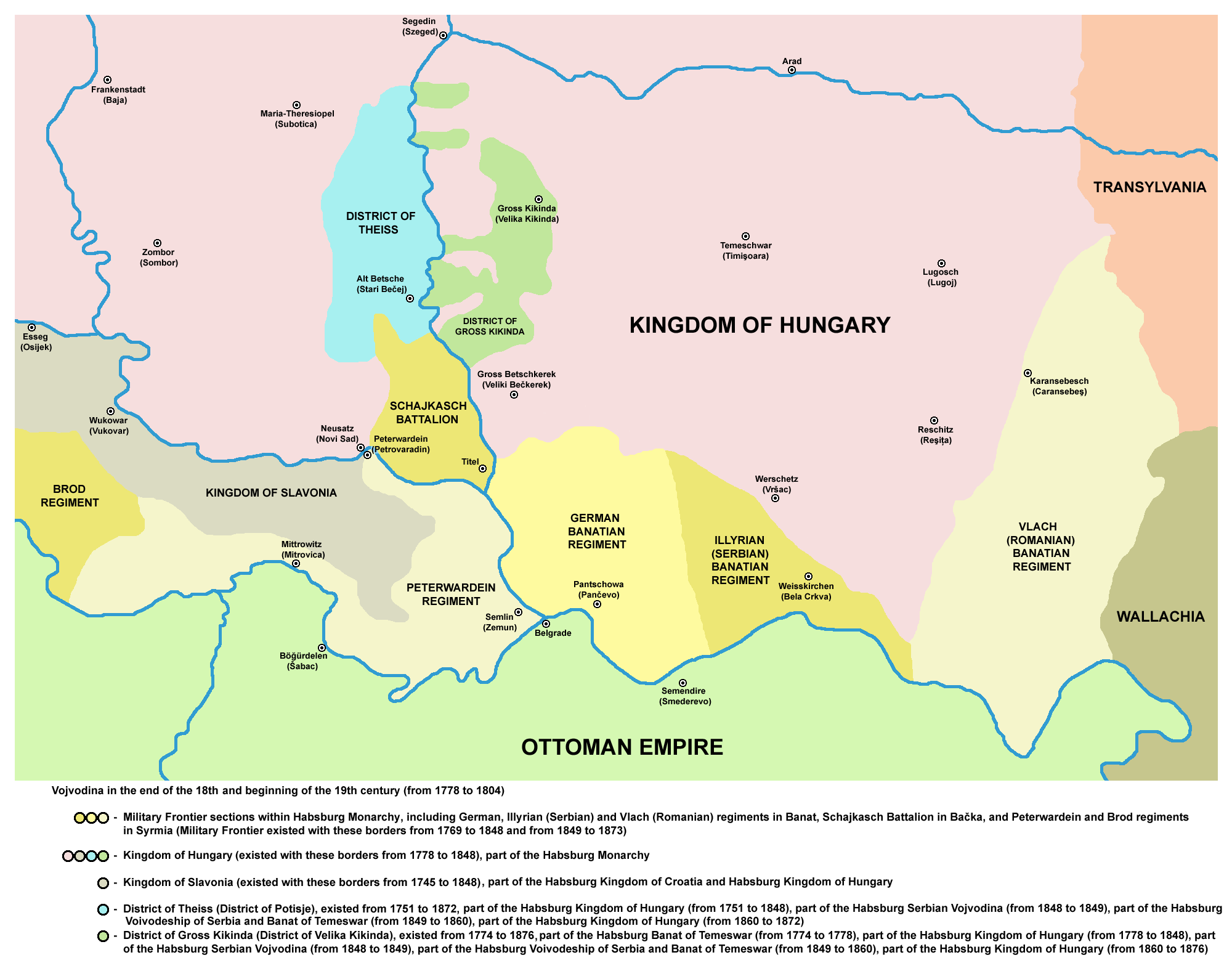|
Knićanin
Knićanin (, ) is a village in Serbia. It is located in the Zrenjanin municipal area, in the Banat region (Central Banat District), Vojvodina province. Its population is 2,034 (2002 census) and most of its inhabitants are ethnic Serbs (97.39%). Name The village was named after voivod Stevan Knićanin, who was the commander of the Serbian volunteer squads in the Serbian Vojvodina during the 1848/1849 revolution. Other names for the village used in Serbian were ''Knićaninovo'' (Книћаниново) and ''Rudolfovo'' (Рудолфово). The former German name of the village, ''Rudolfsgnad'', was in use since 1868, when the village was named after Crown Prince Rudolf (1858-1889). The Hungarian version of the name derives from the German. Population Knićanin has a Serb ethnic majority; ethnic Serbs number 1,981 inhabitants of the village. Other ethnic groups include Hungarians, Yugoslavs, Slovaks, Croats, and others. History The village was founded during Austrian admi ... [...More Info...] [...Related Items...] OR: [Wikipedia] [Google] [Baidu] |
Stevan Knićanin
Stevan Petrović, Military Order of Maria Theresa, KCMT ( sr-cyr, Стеван Петровић), known as Stevan Knićanin (Стеван Книћанин, ''Stevan of Knić''; 15 February 1807 – 14 May 1855) was a Serbian ''voivode'' (commander) of the Serbian volunteer squads in Serbian Vojvodina during the Revolutions of 1848 in the Habsburg areas, 1848 revolution. Life Stevan Petrović was born on 15 February 1807 in Knić near Kragujevac (hence his nickname), during the Serbian Revolution, the region at the time being part of the Sanjak of Smederevo of the Ottoman Empire (today Serbia). During the rule of Prince Miloš Obrenović, Knićanin's political career began as a commissioner of the Jasenica (Valjevo), Jasenica municipality in 1835, and in 1839 as a commissioner of the Smederevo district, but he eventually joined the opposition as a Constitutionalist and supporter of the rival Prince Alexander Karađorđević, Prince of Serbia, Aleksandar Karađorđević of the Ka ... [...More Info...] [...Related Items...] OR: [Wikipedia] [Google] [Baidu] |
Zrenjanin
Zrenjanin ( sr-Cyrl, Зрењанин, ; hu, Nagybecskerek; ro, Becicherecu Mare; sk, Zreňanin; german: Großbetschkerek) is a List of cities in Serbia, city and the administrative center of the Central Banat District in the autonomous province of Vojvodina, Serbia. The city urban area has a population of 76,511 inhabitants, while the city administrative area has 123,362 inhabitants (2011 census data). The old name for Zrenjanin is Veliki Bečkerek or ''Nagybecskerek'' as it was known under Austria-Hungary up until 1918. Zrenjanin is the largest city in the Serbian part of the Banat geographical region, and the third largest city in Vojvodina (after Novi Sad and Subotica). The city was designated European city of sport. Name The city was named after Žarko Zrenjanin (1902–1942) in 1946 in honour and remembrance of his name. One of the leaders of the Vojvodina Communism, communist Partisans (Yugoslavia), Partisans during World War II, he was imprisoned and released afte ... [...More Info...] [...Related Items...] OR: [Wikipedia] [Google] [Baidu] |
List Of Populated Places In Serbia
This is the list of populated places in Serbia (excluding Kosovo), as recorded by the 2002 census, sorted alphabetically by municipalities. Settlements denoted as "urban" (towns and cities) are marked bold. Population for every settlement is given in brackets. The same list in alphabetic order is in List of populated places in Serbia (alphabetic). A Ada Aleksandrovac Aleksinac Alibunar Apatin Aranđelovac Arilje B Babušnica Bač Bačka Palanka Bačka Topola Bački Petrovac Bajina Bašta Barajevo Batočina Bečej Bela Crkva Bela Palanka Beočin Blace Bogatić Bojnik Boljevac Bor Bosilegrad Brus Bujanovac C Crna Trava Č Čačak Čajetina Čoka Čukarica Ć Ćićevac Ćuprija D Despotovac Dimitrovgrad Doljevac G Gadžin Han Golubac Gornji Milanovac Grocka I Inđija Irig Ivanjica J Jagodina K Kanjiža Kikinda Kladovo Knić Knjaževac Koceljeva Kosjerić Kovačica Kovi ... [...More Info...] [...Related Items...] OR: [Wikipedia] [Google] [Baidu] |
Danube Swabian
The Danube Swabians (german: Donauschwaben ) is a collective term for the ethnic German-speaking population who lived in various countries of central-eastern Europe, especially in the Danube River valley, first in the 12th century, and in greater numbers in the 17th and 18th centuries. Most were descended from earlier 18th-century Swabian settlers from Upper Swabia, the Swabian Jura, northern Lake Constance, the upper Danube, the Swabian-Franconian Forest, the Southern Black Forest and the Principality of Fürstenberg, followed by Hessians, Bavarians, Franconians and Lorrainers recruited by Austria to repopulate the area and restore agriculture after the expulsion of the Ottoman Empire. They were able to keep their language and religion and initially developed strongly German communities in the region with German folklore. Thousands also came from Eastern Europe. The Danube Swabians were given their German name by German ethnographers in the early 20th century. In the 21st c ... [...More Info...] [...Related Items...] OR: [Wikipedia] [Google] [Baidu] |
Torontál County
Torontál (, , , ) was an administrative county (comitatus) of the Kingdom of Hungary. Its territory is now divided between Serbia and Romania, except for a small area which is part of Hungary. The capital of the county was Nagybecskerek (, , ), the current Zrenjanin. Geography Torontál county was located in the Banat region. From its recreation in 1779 until its partition in 1920 it shared borders with the Hungarian counties of Bács-Bodrog, Csongrád, Csanád, Arad and Temes. The Banat Military Frontier lay along its southern border until it was abolished in 1873, after which the river Danube formed its southern border, which it shared with the Principality of Serbia (Kingdom of Serbia after 1882), and the Slavonian Military Frontier ( Croatian-Slavonian county of Syrmia after 1881). The river Tisza formed its western border and the river Maros (Mureș) its northern border. The rivers Aranca, Bega, Timiș and Bârzava flowed through the county. Its area was around 1 ... [...More Info...] [...Related Items...] OR: [Wikipedia] [Google] [Baidu] |
Banatian Military Frontier
The Banat Military Frontier or simply Banat Frontier ( sr, Банатска крајина/Banatska krajina; ro, Granița militară Bănățeană) was a district of the Habsburg monarchy's Military Frontier located in the Banat region. It was formed out of territories of the Banat of Temeswar. Today, the territory is split between Hungary, Serbia and Romania. Geography The Frontier was divided into Serb (''Illyrian''), German (''Danube Swabian'') and Romanian (''Vlach'') sections. It included parts of modern-day Banat and the south-eastern part of Bačka region, known as Šajkaška. Some of the important cities and places were: Pančevo, Bela Crkva, Titel, Žabalj, Alibunar, Kovin, and Caransebeş. History The military province of Habsburg monarchy known as the Banat of Temeswar was created in 1718. In 1751, Maria Theresa introduced a civil administration for the northern part of the province. The southern part remained under military administration and was organized as the Ba ... [...More Info...] [...Related Items...] OR: [Wikipedia] [Google] [Baidu] |
Lukićevo
Lukićevo (; hu, Zsigmondfalva) is a village in Serbia. It is located in the Zrenjanin municipality, in the Central Banat District, Vojvodina province. The village has a Serb ethnic majority (93.45%) and its population numbering 2,077 people (2002 census). Name Formerly, the village was known in Serbian as ''Martinica'' (Мартиница). Village is also known by names in other languages: or ''Sigmundsdorf'', . Historical population *1961: 1,930 *1971: 2,091 *1981: 2,186 *1991: 2,196 *2002: 2,077 *2011: 1,804 Notes References *Slobodan Ćurčić, Broj stanovnika Vojvodine, Novi Sad, 1996. See also *List of places in Serbia *List of cities, towns and villages in Vojvodina This is a list of cities, towns and villages in Vojvodina, a province of Serbia. List of largest cities and towns in Vojvodina List of urban settlements in Vojvodina List of all urban settlements (cities and towns) in Vojvodina with populati ... {{commonscat, Lukićevo Populated place ... [...More Info...] [...Related Items...] OR: [Wikipedia] [Google] [Baidu] |
Ečka
Ečka ( sr-cyr, Ечка, ; hu, Écska) is a village located in the Zrenjanin municipality, in the Central Banat District of Serbia. It is situated in the autonomous province of Vojvodina. Name and history In Serbian, the village is known as ''Ečka'' (Ечка), in Romanian as ''Ecica'' or ''Ecica Română'', in German as ''Deutsch-Etschka'', and in Hungarian as ''Écska'' (until 1899: ''Német-Écska''). The village was merged with former settlement known as ''Mala Ečka'' (Мала Ечка) in Serbian, ''Alt Etschka'' in German, and ''Román-Écska'' or ''Olahécska'' in Hungarian. Ethnic groups (2002 census) The village has a Serb ethnic majority and its population numbering 4,513 people (2002 census). *Serbs = 2,483 (55.02%) *Romanians = 1,325 (29.36%) *Hungarians = 196 (4.34%) *Yugoslavs = 123 (2.73%) *Romani = 72 (1.60%) Historical population *1900: 4,892 *1931: 5,207 *1948: 3,934 *1953: 4,188 *1961: 4,323 *1971: 4,621 *1981: 5,293 *1991: 5,172 Trivia *Franz ... [...More Info...] [...Related Items...] OR: [Wikipedia] [Google] [Baidu] |
Germans
, native_name_lang = de , region1 = , pop1 = 72,650,269 , region2 = , pop2 = 534,000 , region3 = , pop3 = 157,000 3,322,405 , region4 = , pop4 = 21,000 3,000,000 , region5 = , pop5 = 125,000 982,226 , region6 = , pop6 = 900,000 , region7 = , pop7 = 142,000 840,000 , region8 = , pop8 = 9,000 500,000 , region9 = , pop9 = 357,000 , region10 = , pop10 = 310,000 , region11 = , pop11 = 36,000 250,000 , region12 = , pop12 = 25,000 200,000 , region13 = , pop13 = 233,000 , region14 = , pop14 = 211,000 , region15 = , pop15 = 203,000 , region16 = , pop16 = 201,000 , region17 = , pop17 = 101,000 148,00 ... [...More Info...] [...Related Items...] OR: [Wikipedia] [Google] [Baidu] |
Austrian Empire
The Austrian Empire (german: link=no, Kaiserthum Oesterreich, modern spelling , ) was a Central-Eastern European multinational great power from 1804 to 1867, created by proclamation out of the realms of the Habsburgs. During its existence, it was the third most populous monarchy in Europe after the Russian Empire and the United Kingdom. Along with Prussia, it was one of the two major powers of the German Confederation. Geographically, it was the third-largest empire in Europe after the Russian Empire and the First French Empire (). The empire was proclaimed by Francis II, Holy Roman Emperor, Francis II in 1804 in response to Napoleon's declaration of the First French Empire, unifying all Habsburg monarchy, Habsburg possessions under one central government. It remained part of the Holy Roman Empire until the latter's dissolution in 1806. It continued fighting against Napoleon throughout the Napoleonic Wars, except for a period between 1809 and 1813, when Austria was first all ... [...More Info...] [...Related Items...] OR: [Wikipedia] [Google] [Baidu] |
Rudolf, Crown Prince Of Austria
en, Rudolph Francis Charles Joseph , caption = Rudolf in 1887 , spouse = , issue = Elisabeth Marie, Princess Otto of Windisch-Graetz , house = Habsburg-Lorraine , father = Franz Joseph I of Austria , mother = Empress Elisabeth of Austria , birth_date = , birth_place = Schloss Laxenburg, Laxenburg, Lower Austria, Austrian Empire , death_date = , death_place = Mayerling, Lower Austria, Austria-Hungary , burial_date = , burial_place = Imperial Crypt, Vienna , occupation = , signature = , religion = Roman Catholicism Rudolf, Crown Prince of Austria (Rudolf Franz Karl Josef; 21 August 1858 – 30 January 1889) was the only son and third child of Emperor Franz Joseph I of Austria and Duchess Elisabeth in Bavaria (Sissi). He was heir apparent to the imperial throne of the Austro-Hungarian Empire from birth. In 1889, he died in a suicide pact with his mistress Mary Vetsera at the Mayerling hunting lodge. The ... [...More Info...] [...Related Items...] OR: [Wikipedia] [Google] [Baidu] |







